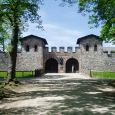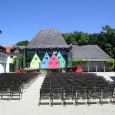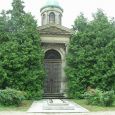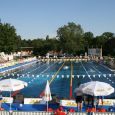Schwechat
Advertisement
By Air
Vienna International Airport the headquarters of Austrian Airlines and the headquarters of Niki are in the city of Schwechat.When Lauda Air was an independent airline it had its corporate headquarters in Schwechat.
By Road
Beside the location as a hub in road traffic southeast of Vienna are both the international airport Vienna-Schwechat and the of the OBB -operated sliding Central Station switchyard at Vienna which represents a distribution center for eastern Austria, nationally significant.
By Train
The city is of the Bratislava railway crossing, on which day the S-Bahn S7 direction Flughafen Wien-Schwechat and continue towards Wolfsthal travels to Vienna and the S8.To 1961 resulted in a tram to the Viennese lines (line 72) from Vienna by the Simmeringer main road up to Schwechat.
By Ferry
Along the rivers there are also largely crossing-free cycle paths such as the direction of Vienna- Oberlaa.Since April 2006, the highway leads through Schwechat S1, which the A4 ( east motorway, node Schwechat) and A2 ( motorway, Vosendorf) interconnects.It is one of the most modern roads in Europe.
Railway Museum in Schwechat
is located in Schwechat Schwechat in Lower Austria on the former base of operations Pressburger track opposite the present station.The museum is the association of railway enthusiasts run.Restored standard gauge vehicles are primarily located in two historic buildings and a newly-built vehicle.For narrow-gauge vehicles is a hall available.In the outdoor area are also many still unrestored cars.The situation is accordingly mainly locomotives of the former railway Pressburger exhibited but also coaches both on this track but also on other railways of Austria-Hungary on the road.Even diesel railcar from the interwar period are shown.The Railway Museum Schwechat is a partner of the Technical Museum Vienna (TMW).The museum takes one hand reconstructions as external restoration workshop and on the other hand also shows TMW exhibits on loan.The Museum was also awarded the museum label stands.
Austrian Aviation Museum
is a private aviation museum, located in the Lower Austrian town Schwechat.The museum was founded in 1996 by four individuals and society and is founded on the premises of Schwechat brewery in a listed generator hall.Some items come from the former visitors terrace at Schwechat Airport.
Fort Ala Nova
is a former Roman cavalry fort (Alenkastell for 500 riders) in the Austrian section of the oberpannonischen limit.It was located in the municipality of Schwechat, Lower Austria, a few miles east of Vienna.The area of the former cavalry fort was spread on the site of today's Alanovaplatzes, the cemetery and the brewery in the suburb of Klein-Schwechat.The stationing of a mobile cavalry unit was strategically necessary to the plains of Vindobona and Carnuntum along the Danube River to better protect and enable the rapid intervention in case of emergency.Ala Nova was probably in the late 1st Century fortifications made of wood and earth on the left bank of the Schwechat (Frauenfeld) and built only in the second Century as a rectangular walled fort on Alanovaplatz rebuilt.In the period of occupation by the end of the 4th Century, several rebuilding phases known.In the vicinity of the fort is due to single finds at least one civilian settlement (vicus) is suspected.burial were in the Schwechat main square and south of the fort, the women's field, discovered.
Thurn mill
is a Baroque castle in the municipality of Schwechat in Lower Austria.It is located in the castle on the banks of the river Muhlstrabe 1 Schwechat.The formerly fortified building is first mentioned in 1162 under the name de Prato and 1269 called Porz.The beginning of the 14th Century in the possession of the lords of Ebersdorf located Porz fortress was destroyed in 1318 and 1529.1689, came to the possession of Count Karl Reich Maximilian von Thurn und Valsassina who rebuilt the mill and the castle.From there comes forth the name of the building.1725 they were from the Oriental Company acquired in 1745 by the Imperial privileged calico, which was built in place of the mill next to the palace premises.In 1902 it established a metal products factory, whose administration is building the mill Thurn.It was restored around 1980 and is owned by the Skibindungshersteller HTM Tyrolia.
Schwechat Nestroy games
The Schwechat Nestroy games since 1973 are an annual theater festival which takes place in the castle Rothmuhle in Rannersdorf, a district of Schwechat in Lower Austria.The Schwechat Nestroy games were in 1973 by the "Amateur Theatre St. James was founded and is the oldest Nestroy games worldwide.Acted as the initiator of the head of the Amateur Group Walter Mock (1927-1985) as a director was Peter Gruber won since the result is still before directed and director.As the venue was selected in the castle Rothmühle Rannersdorf.As early as 1972 there was the group of "St. Jacob" a piece of open-air courtyard in the list it was" everyone".The amateur acting troupe had created even before the establishment phase of Nestroy games Schwechat through tours of respect abroad.(Germany, Switzerland, Czechoslovakia, Holland etc.) For now the group had no rehearsal and stage areas after their former home samples was demolished in the Brewery Road 6, in the summer of 1980.In 1982 the troupe was in the "forum in the barracks" (today it houses the Senior Center Schwechat) a new home.The hut was only a manor house, because she had to be shared with other activists.The Municipality of Schwechat struggled in the next few years to find a suitable accommodation option for the cultural work and its Nestroy actor.
Rothmuhle Castle
The castle is a Rothmuhle Baroque castle in Lower Austria Rannersdorf, a district of Schwechat.The castle was built in the last phase of the Second World War severely damaged by bombing.The castle was repaired provisionally until the purchase by the town of Schwechat on 28 April 1967 as a residential building used for working families.After the purchase was under the monument standing building on the 6,500 acre estate of 8 million shillings rehabilitated until 1972 and again in 2001, renovated by the city of Schwechat.
Rudolf Tonn Stadium
is an Austrian football stadium in Rannersdorf, a district of Schwechat.It has since its completion in 1980 the home of SV Schwechat in the East Regional and will be for athletics events used.The stadium has 2608 seats being achieved with the standing room a total capacity of around 7,000 visitors.It was founded in 2001 after the former mayor Schwechater Rudolf Tonn named.The construction of the stadium was the construction of the highway east required (A4).For this had the Schwechat River to be moved to turn the former "Germania stadium" in the Germania Street, which since the 11th September 1904 was the home ground of SV Schwechat stood in the way.The stadium was built because of its proximity to the ASK Antonshof in Rannersdorf.
October - February
April - September






